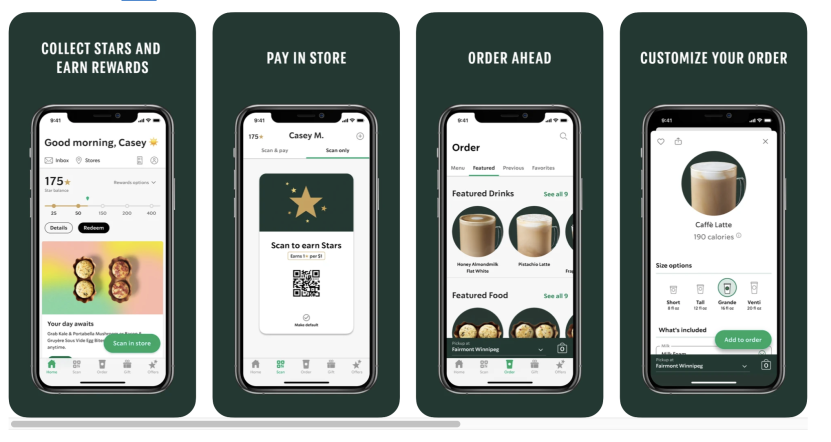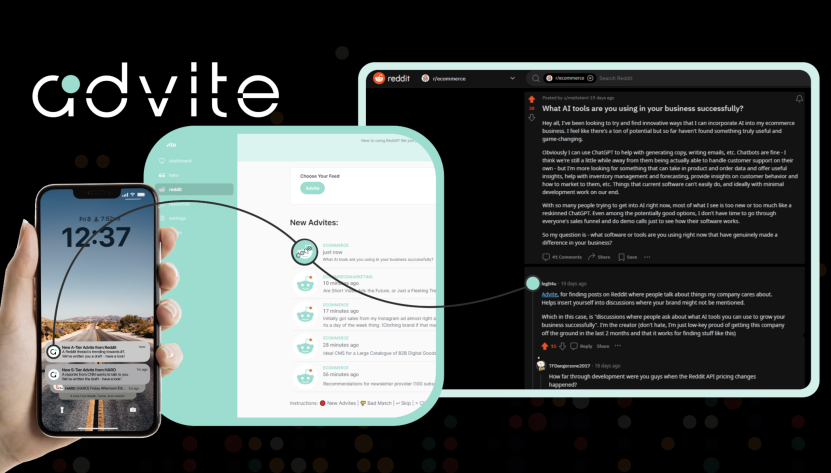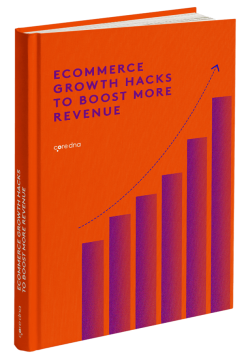The Trends in eCommerce: Embracing Predictive Ai & Personalization

On this page:
1. Personalization: Your Shopping Mirror
eCommerce experiences are being fundamentally altered by personalization in several essential ways.
Personalization is the new black if we can use this expression from the fashion world to describe e-commerce environments. Imagine strolling through a digital mall, where every store knows your style, size, and even your guilty pleasures? This isn’t just convenient—it’s like having a shopping mirror reflecting your unique tastes and preferences.
Personalization is about more than just easier purchasing; it’s about forging bonds as well. When an online store suggests “those shoes” or “the book I couldn’t put down” – it’s more than a sale – it’s one of those moments when somebody would say – they get me! This connection is the secret sauce of customer loyalty in the digital age.
The many ways personalization is reshaping eCommerce businesses
Boosted Customer Satisfaction
- Recommendation of products that matter: Artificial intelligence and data analysis can help to reduce the purchase anxiety, as they suggest products based on individual preferences and past transactions.
- More interesting browsing: Dynamic contents of the screens that are personalized for specific individuals harmonize with their particular interests, leading them to explore more hence stay active longer.
- Flawless omnichannel experience: Personalized recommendations and offers ensure consistent and satisfactory customer journey across multiple channels.
Increased Sales and Conversions
- Targeted marketing tactics: Such things as personalized discounts resonate with people’s needs better than general advertisements, thus contributing to higher conversion rates.
- Lesser returns of purchases: The act of suggesting suitable products to customers based on their likings reduces chances of receiving unsatisfactory ones or returns.
- Growth in average order value (AOV): By recommending additional products or upgrades, personalization can facilitate the rise in AOV for a single transaction among patrons who had not planned it before.
Enhanced Brand Loyalty and Advocacy:
- Feeling valued and understood: When an e-commerce platform understands its customers’ needs, it makes them feel important; hence they may keep coming back or advocate for the brand.
- Sense of community and belonging: A brand may cultivate loyalty through personalized communication channels such as targeted loyalty programs that make customers feel like they belong to a community in addition to owning some belongingness towards themselves too according to the company they are dealing with at all times.
- Trustworthiness through transparency: Customers will trust you more if your personalization efforts feel genuine and ethical meaning their data is put into good use as far as they can understand though the language used is officially confidential.
Starbucks mobile app - The route of personalization
Starbucks have invested heavily in personalization and will continue to do so because it works with record earning in Q1 Fiscal 2024. The Starbucks mobile app is the primary driver of this growth with loyalty programs, rewards and curated recommendations.
“This was driven by a record 90-day active user base of 31.4 million Starbucks Rewards customers in the U.S., an approximate 15% growth or 4 million new customers from the previous year. Starbucks Rewards members in the U.S. drove 57% of tender for the second consecutive quarter, up over 3 percentage points from the prior year,” Narasimhan detailed.

2. How to Implement Personalization Works in eCommerce
To creating personalized and engaging experiences for customers online, eCommerce businesses need to gather comprehensive data and create a compelling customers journey based on the information they have.
1. Data Collection:
The basis of personalization is information such as:
- Explicit data: information customers directly give such as browsing behaviour, purchase history and preferences.
- Implicit Data: Indirectly gathered hints like clicks, search terms and viewed products.
- Third-party Data: Behavioral and demographic details obtained from external platforms.
2. Data Analysis:
Advanced algorithms and machine learning techniques are implemented in the analysis of collected data to detect patterns and predict preferences. Consider these algorithms as detectives trying to figure out each customer’s specific wants and needs.
3. Segmentation and Targeting:
Following the analysis, segments with similar characteristics or interests are created among the customers. This facilitates customization of content, offers, recommendations for each segment.
4. Dynamic Content Delivery
It happens here! Insights from websites and apps help in customizing different elements such as;
- Product Recommendations: basing on previous purchases made people can see other products they may need in future or current searches
- Homepage And Category Pages: giving prominence to specific items that appeal to different segments makes it easier for users to navigate through pages
- Marketing Messages And Offers: developing targeted promotions and discounts that suit individual expectations or preferences
- Email Marketing: crafting personalized campaigns with relevant product suggestions plus incentives.
5. Continuous Learning & Improvement:
Personalization is a continuous process. As customers interact more, the pool of data increases while algorithms learn better thus improving personalization over time.
Beyond Mechanics:
Remember personalization is not only about technology but also requires a customer-centric approach involving understanding what factors influence buying decisions as well as motivators behind them. Here are some other considerations;
- Transparency & Privacy: let customers know how their information is being collected and if it will be used by third parties while also addressing privacy issues that may arise
- Ethical AI: ensuring that there are no biases in your algorithms so that all consumer groups get treated fairly
- Omnichannel Consistency: providing seamless experiences online via all offline touch points
By using these methods strategically, eCommerce businesses can unleash the power of personalization. The advantages are numerous ranging from increased sales and conversions to customer loyalty and advocacy making future prospects successful as well as customers focused.
3.Predictive personalization Transforms the User Journey
eCommerce has gone beyond being reactive by applying data-driven approaches to forecast customer tastes and hence enabling personalized shopping experiences.
Here's how this transformative technology is impacting the industry:
Impact on Customers:
- Increased Conversion Rates: Epsilon research found that consumers are 80% more likely to make a purchase when a brand offers personalized experiences.
- Enhanced Customer Satisfaction: A study by McKinsey reports that personalization can increase customer satisfaction by 5-20%.
- Improved Brand Loyalty: Epsilon also found that personalized experiences can increase brand loyalty by 10%.
Impact on Businesses:
- Boosted Revenue: A new report by Accenture claims AI can positively impact the bottom line of some businesses by up to 38%.
- Reduced Costs: McKinsey estimates that AI can reduce marketing and sales costs by 15% to 20%.
- Improved Inventory Management: AI can help streamline supply chains by reducing storage and shipping costs, synchronize inventory of all locations, optimized warehouse storage, automatic reordering and much more.
The Future of Predictive AI:
As AI technology evolves, we can expect even more sophisticated and impactful applications in e-commerce. For instance, AI could:
- Personalize pricing in real-time based on individual customer data.
- Predict churn risk and proactively engage with customers to prevent them from leaving.
- Create hyper-targeted marketing campaigns with laser-sharp accuracy.
These are the best AI personalization tools:
- Advite: An AI integration tools that finds discussions online across all social media that related to your business and notifies you so you can connect with consumers in a more genuine way. Great to find leads, and just build a reputation of thought leader in your sector.

- Dynamic Yield by master card: A super power of AI personalization. It allows you to know your customers inside out and tailor the experience to their wants and needs.

- Klevu: Another great player in user-journey personalization guaranteeing results within the first weeks.

Embrace the Future of eCommerce!
Predictive AI is revolutionizing e-commerce, creating a win-win situation for both customers and businesses. By offering personalized experiences, boosting sales, and reducing costs, it's shaping the future of online shopping to be more efficient, delightful, and profitable than ever before. So, buckle up and get ready for the ride!

eCommerce Growth Hacks
29 tried-and-tested eCommerce growth hacks you can try.














